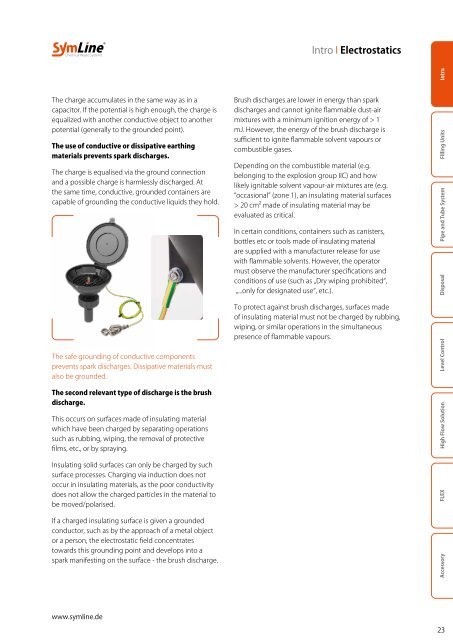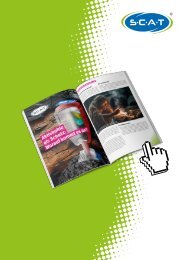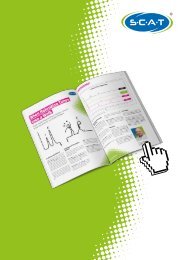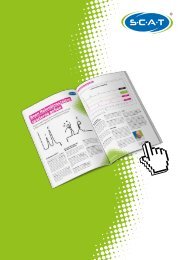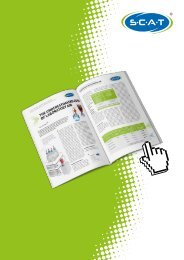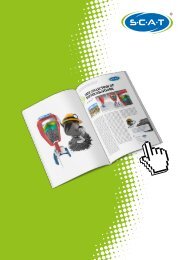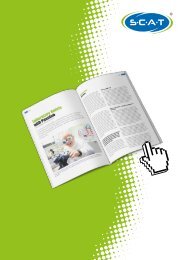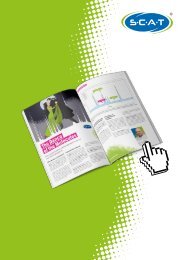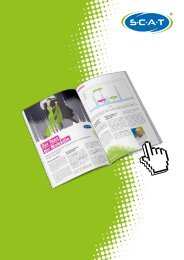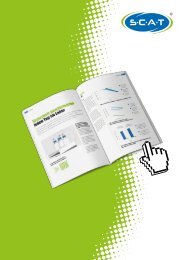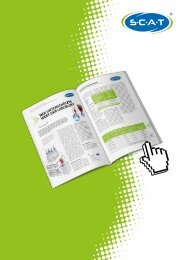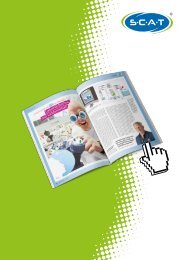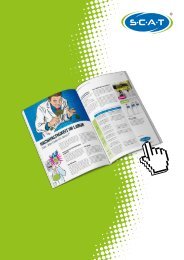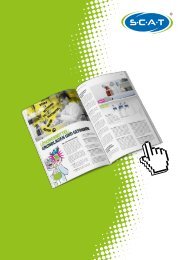SymLine Chemical Waste Systems Catalogue
You also want an ePaper? Increase the reach of your titles
YUMPU automatically turns print PDFs into web optimized ePapers that Google loves.
Intro I Electrostatics<br />
The charge accumulates in the same way as in a<br />
capacitor. If the potential is high enough, the charge is<br />
equalized with another conductive object to another<br />
potential (generally to the grounded point).<br />
The use of conductive or dissipative earthing<br />
materials prevents spark discharges.<br />
The charge is equalised via the ground connection<br />
and a possible charge is harmlessly discharged. At<br />
the same time, conductive, grounded containers are<br />
capable of grounding the conductive liquids they hold.<br />
The safe grounding of conductive components<br />
prevents spark discharges. Dissipative materials must<br />
also be grounded.<br />
The second relevant type of discharge is the brush<br />
discharge.<br />
This occurs on surfaces made of insulating material<br />
which have been charged by separating operations<br />
such as rubbing, wiping, the removal of protective<br />
films, etc., or by spraying.<br />
Insulating solid surfaces can only be charged by such<br />
surface processes. Charging via induction does not<br />
occur in insulating materials, as the poor conductivity<br />
does not allow the charged particles in the material to<br />
be moved/polarised.<br />
If a charged insulating surface is given a grounded<br />
conductor, such as by the approach of a metal object<br />
or a person, the electrostatic field concentrates<br />
towards this grounding point and develops into a<br />
spark manifesting on the surface - the brush discharge.<br />
Brush discharges are lower in energy than spark<br />
discharges and cannot ignite flammable dust-air<br />
mixtures with a minimum ignition energy of > 1<br />
mJ. However, the energy of the brush discharge is<br />
sufficient to ignite flammable solvent vapours or<br />
combustible gases.<br />
Depending on the combustible material (e.g.<br />
belonging to the explosion group IIC) and how<br />
likely ignitable solvent vapour-air mixtures are (e.g.<br />
“occasional” (zone 1), an insulating material surfaces<br />
> 20 cm² made of insulating material may be<br />
evaluated as critical.<br />
In certain conditions, containers such as canisters,<br />
bottles etc or tools made of insulating material<br />
are supplied with a manufacturer release for use<br />
with flammable solvents. However, the operator<br />
must observe the manufacturer specifications and<br />
conditions of use (such as „Dry wiping prohibited“,<br />
„...only for designated use“, etc.).<br />
To protect against brush discharges, surfaces made<br />
of insulating material must not be charged by rubbing,<br />
wiping, or similar operations in the simultaneous<br />
presence of flammable vapours.<br />
Accessory FLEX<br />
High Flow Solution<br />
Level Control<br />
Disposal<br />
Pipe and Tube System<br />
Filling Units<br />
Intro<br />
www.symline.de<br />
23


